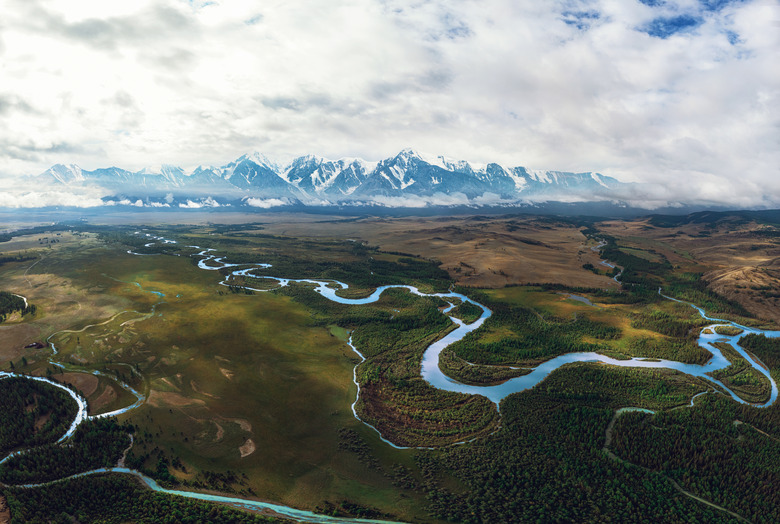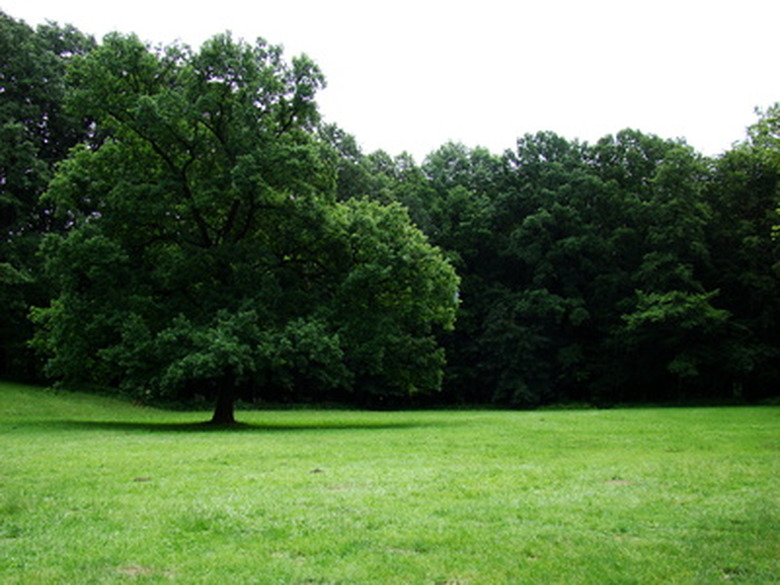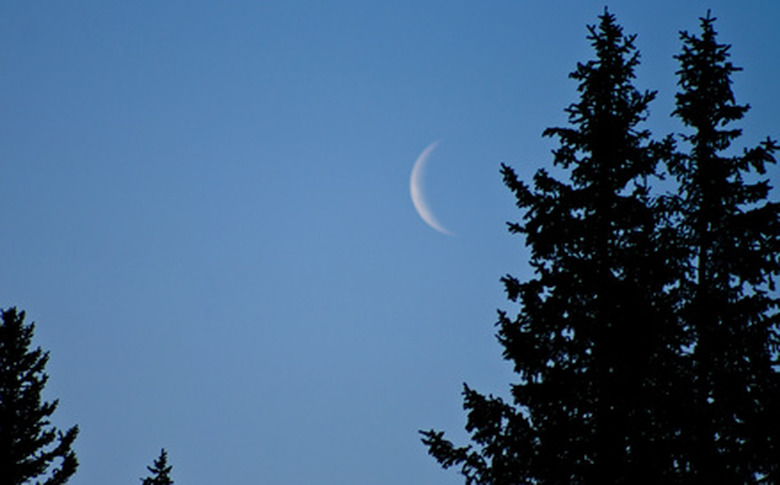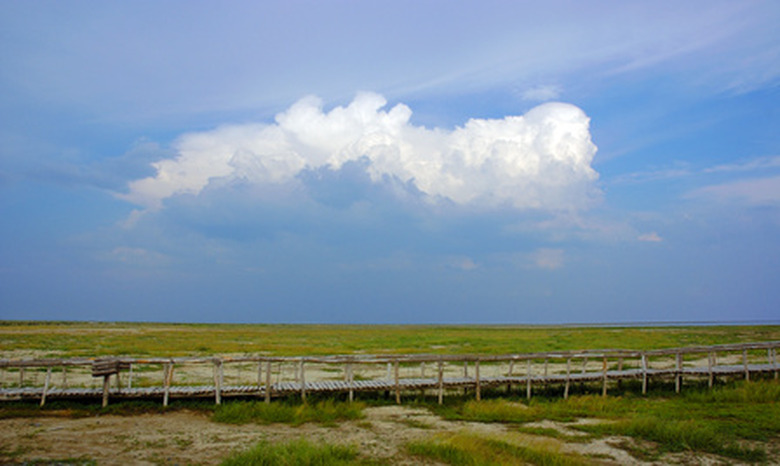What Are Seven Land Biomes?
Everyone alive on the planet today lives in one massive biome: Earth, especially when viewed from space. A biome basically represents an ecological community categorized by its physical characteristics such as soil, its climate and the life it supports. While Earth can be considered as one biome, it's normally subdivided into additional biomes. Scientists separate biomes into two distinct classifications: aquatic and terrestrial. The largest biome on Earth is the aquatic one, as water covers 75 percent of the globe. Further scientific cataloguing leads to multiple eco-regions across the globe.
TL;DR (Too Long; Didn't Read)
In the terrestrial category, 7 biomes include tropical rainforests, temperate forests, deserts, tundra, taiga – also known as boreal forests – grasslands and savanna.
Physical Characteristics Within the 7 Biomes
Physical Characteristics Within the 7
Biomes
Biologists identify these 7 biomes by their individual and distinctive physical characteristics:
**Tropical Rainforests:** Receive constant rain throughout the year, which makes these areas (usually located at the equator) lush with tropical plants, trees, rivers, streams and rich, fertile soil. Most of the trees in the tropical rainforest keep their leaves, and scientists still discover new plants and animal species within this ecological community.
**Temperate Forests:** These forests have four distinct seasons – as compared with the tropical rainforest – with many evergreen and deciduous trees, which are trees that shed their leaves in the fall and winter. Cold winters and warm summers support a variety of bird and animal life including bears that hibernate during the winter months, deer, elk, squirrels, foxes, wolves, coyotes and other small mammals.
**Taiga**: These ecological communities represent some of the oldest forests in the world. They're also called boreal forests. As the largest of the seven land biomes, taiga consists mostly of conifers like fir, pine and cedar with needle-shaped leaves that stay green most of the year. Long, cold winters force migratory birds south and mammals to develop thick, white coats in the winter.
**Deserts:** The desert biome is best known for its hot, dry summers and cold winters. Most deserts receive little rainfall, and some of the plants evolved to retain water to thrive. Cacti developed spines to protect their fleshy hulls that store water for those arid months. Snakes, lizards and other cold-blooded reptiles winter underground only to come out when the weather turns warm.
**Grasslands:** Represent the great prairies or plains dominated by grasses, treeless plains and large herds of grazing animals like buffalo, bison or deer in the United States. Enough rain falls to keep grasses and herbs growing, but dry summers and fires keep trees from taking hold.
**Savanna:** Unlike grasslands, savannas receive enough rain to support trees in groups or dotted throughout the environment. Grazing herd animals have long legs to run away from the many predators that thrive in the large, flat plains like lions, hyenas and cheetahs.
**Tundra:** Large swaths of land marked by flat, cold plains support low grasses, plants and green moss in the summer. Much of the tundra includes permafrost – frozen ground – just beneath the ground's surface. Mice and other small creatures go underground during winter freezes.
A Biome's Four Major Features
A Biome's Four Major Features
Scientists classify biomes by four major aspects: the climate, soil, vegetation and the living organisms that populate the ecological community. The climate and soil determine the type of plants that can thrive in the community and the biological organisms it can sustain. A desert biome, for example, supports a whole different ecological community than that found in a tropical rainforest. Both communities support reptiles, but the reptiles in the rainforest – crocodiles, lizards, turtles and tortoises – would not survive in a desert without going through years of evolution to adapt to its drier conditions, even though a desert also supports different species of tortoises and lizards.
Biome Subclassifications
Biome Subclassifications
The Earth supports multiple biomes, with the five major biome classifications being: aquatic, desert, grassland, tundra and forests. But scientists like to classify these ecological communities into even smaller distinctive categories. In the aquatic classification for example, the first subcategories include freshwater and marine, with further classification into multiple subsets: freshwater, freshwater wetlands and marshes, marine, coral reefs and estuaries. Desert biomes break down into hot and dry deserts, semi-arid, coastal and cold deserts. Forest biomes include temperate, tropical and boreal forests while tundra areas on the globe also include the North and South poles covered by ice. Savanna biomes also fall into distinct classifications: temperate and tropical.
Cite This Article
MLA
Brenner, Laurie. "What Are Seven Land Biomes?" sciencing.com, https://www.sciencing.com/seven-land-biomes-7650971/. 22 November 2019.
APA
Brenner, Laurie. (2019, November 22). What Are Seven Land Biomes?. sciencing.com. Retrieved from https://www.sciencing.com/seven-land-biomes-7650971/
Chicago
Brenner, Laurie. What Are Seven Land Biomes? last modified March 24, 2022. https://www.sciencing.com/seven-land-biomes-7650971/



